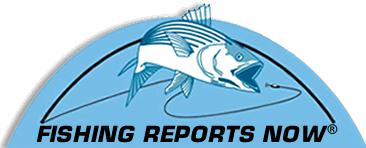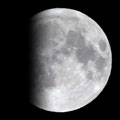page 1 of 2 |
|||
| Manasquan River’s Winter Flounder By Capt. Anthony Reina, Angela Rose Charters, Point Pleasant Originally Posted 4/6/07 |
|||
|
My first job landed me part time on the deck of a local party boat in Point Pleasant during winter 1992. We fished for different species, and my first winter flounder fishing took place on the party boat and on my own 14-foot jon boat in the Manasquan River and in northern Barnegat Bay. I started Angela Rose Charters in 2003 and have been a professional charter guide ever since. Winter flounder fishing is one of my specialties, and I’d like to share the knowledge, tactics, and strategies I’ve learned over the years that can help you catch more of these tasty fish. Like most of you, I suffer from cabin fever during the off-season. Taking a trip for flatties is the sure cure to get outdoors and wet a line for the first time in the season. We all know that Jersey’s cold months can get brutal and unpleasant. The winter of 2007 was uncommonly warm during December and January, and then out of the woodwork, old man winter dealt a wicked blow in February, with plummeting temps. Temperatures finally started mellowing as March started knocking on the door. But no matter whether the winter is cold or warm, the mudbacks generally take the same routine throughout the season. In November and December, flounder come from the ocean and crowd the rivers and bays to spawn. After the spawn they spend most of the winter burying in the mud for protection. As the waters warm, they start making the journey back to the ocean, eventually reaching their summer grounds along the edge of the continental shelf. When the flounder are close to land, it is our passion to bag limits and feast on the flaky white fillets, one of best-eating fish. You can do the same. |
||
Location is key. During the beginning of the season, we fish in northern Barnegat Bay as far back as the Mantoloking Bridge, buoy 18 or Gunner's Ditch. As the schooling flounder start exiting toward the ocean in mid season or late March to early April, they start holding in the Manasquan River, such as off the hospital or Riviera Beach or at the 6/7 hole. By the end of the season, the Path, the Bathtub, Kings Hole or the 2 become some of the dominate locations. Eventually we’ll chase the fish right out of Manasquan Inlet and into the ocean. In any of these locations, you’ll find the flounder in three basic types of bottom: mud flats, channels and holes. These fish will hold in the deeper channels, holes and the mouths of main tidal creeks, like Beaver Dam Creek, until they come up to feed on the shallow flats during certain tides or times of day. I prefer to fish the flats regularly, because the sun heats the mud there and gets the flounder active. The edges of muscle beds are another hot spot, but you should know that the flounder work only along the edges of the beds and not on top of them. Broken and crushed mussels on the edges from anchors, sinkers, large boats running aground or storm damage seem to provide an easy meal. Now that you know where to fish, what can you do to improve your chances of catching them? Chum! I make my own chum based on an improvised recipe that goes way back before my time. I use a 5-gallon bucket of dog food saturated with water, and not just any kind of dog food but one with a good-sized kernel or nugget, and also one consisting of corn meal as the main ingredient. I mash the dog food to a thick paste and then add crushed clam shells, waste from shucked clams, boiled white rice and muscles that I snatch off pilings and docks. I mix it well and fill ½-inch-wire-mesh chum pots with the concoction. When on the water, drop the pots to the bottom and up current from where you’ll throw your lines, because the slick will fall back to your hooked baits and draw the flounders’ attention. |
|||


 Capt.
Anthony Reina grew up fishing northern Barnegat Bay, the Manasquan River and the nearby ocean. After working as a deckhand on party boats from Point Pleasant, he started Angela Rose Charters, and now enjoys sharing with his customers his knowledge and experience about fishing his home waters.
Capt.
Anthony Reina grew up fishing northern Barnegat Bay, the Manasquan River and the nearby ocean. After working as a deckhand on party boats from Point Pleasant, he started Angela Rose Charters, and now enjoys sharing with his customers his knowledge and experience about fishing his home waters. 
